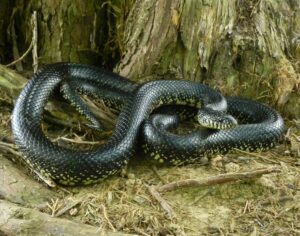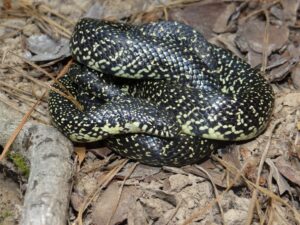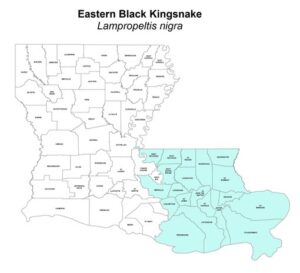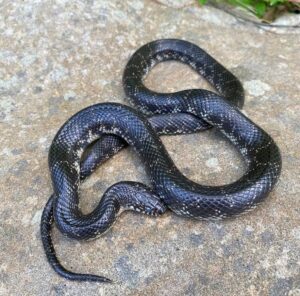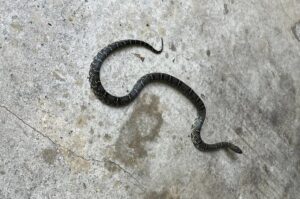The eastern black kingsnake is a large to medium-sized kingsnake that has an extensive range in the eastern United States. It is also known as the black kingsnake. They are active exclusively during the day but most active in summer mornings. Though strongly terrestrial, it lives in places close to water.
Scientific Classifications
- Suborder:Serpentes
- Family:Colubridae
- Genus:Lampropeltis
- Species:L. nigra
Conservation Status
Description
Size
The serpent typically grows to a length of 3-4 ft (91.44-121.92 cm). But it can grow larger. The maximum recorded size is 4.83 ft (147.32 cm).
Color and Appearance
The eastern black kingsnake is black in color with faint yellow or white speckling. The dorsum is unpatterned in some and crossbanded in others. It has the typical slender build of a kingsnake. The belly has a black and white checkered pattern. The body is covered by smooth and shiny scales, and the small head is not distinct from the neck. There is a single anal plate.
Are They Dangerous to Humans
Though secretive and non-venomous, the eastern black kingsnake can release musk, vibrate its tail, and bite if handled.
Eastern Black Kingsnakes at a Glance
Distribution
The colubrid is endemic to the south-eastern United States. To the north, it occurs in Ohio, Indiana, and southern Illinois. The western part of its range covers states like Arkansas, Missouri, and Louisiana. The distribution extends eastward but doesn’t reach the coast. Other states in its range include Alabama, Mississippi, Kentucky, Tennessee, and West Virginia.
Habitat
It lives in a wide variety of habitats, including debris piles, abandoned farmsteads, thick brush around swamps and streams, and edges of floodplains.
Lifespan
The kingsnake lives for 10-15 years on average.
Predators
Their main predators are skunks, raccoons, hawks, and opossums.
Diet
The constrictors often eat other snakes, including venomous pit vipers, as they are apparently immune to their venom. They also prey on lizards and small rodents.
Reproduction
Oviparous (lays eggs that hatch outside the body)
They breed in spring, and the females lay eggs in moist areas in early summer. The hatchlings emerge in late summer or early fall. The juveniles have irregular lateral spotting and thin crossbars. This pattern fades as they age.
Source
tennsnakes.org, louisianaherps.com, thepetenthusiast.com, reddit.com

